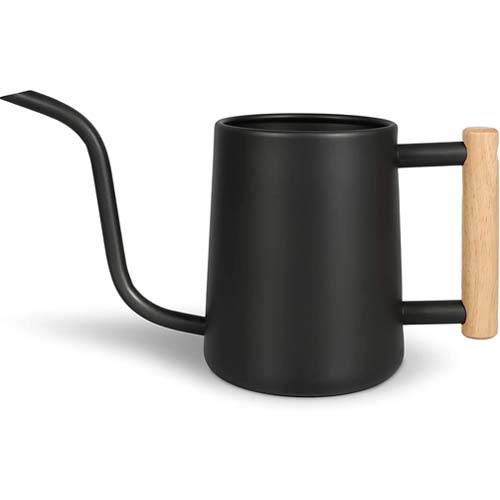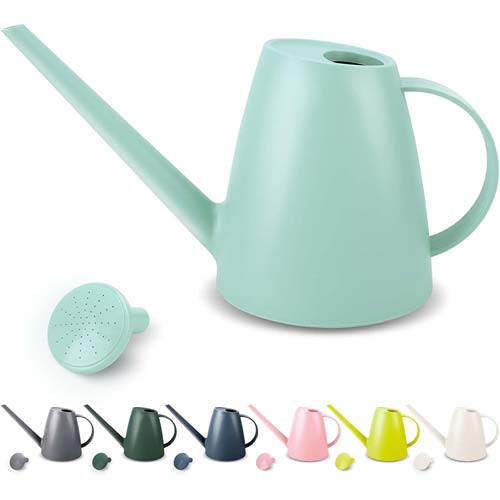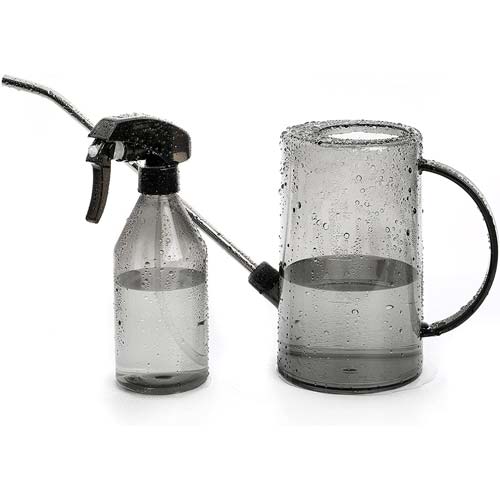Rice Water for Plants | Nourishing or Just A Fad?

Water is utilized in boiling the rice and washing it before cooking. When you’re finished, you’ll have a bowl full of the leftover water, which is foul-tasting and white in color. Instead of throwing this water away, you can use it on plants.
The liquid that remains after the rice has been cooked or soaked is rich in starch which is thought to be good for your plants in various ways. Because of the minerals and vitamins present in it, rice water is a nutritious kitchen byproduct that can be utilized in myriad ways to nourish plants and boost their health.
Rice for plants is very beneficial since this water contains enough (NPK) fertilizer and minerals; it can be used to water plants and encourage a healthy bacterial population. This promotes the expansion of healthy plants. Once hard, it may also ward against harmful pests and may be applied in any means. Rice water contains various chemicals and fatty acids that provide its distinctive flavor.
Is Rice Water Good for Plants?
Yes, rice water can benefit plants as it contains various nutrients and minerals that can help promote healthy growth. Rice water is the starchy water left over after soaking or cooking rice. It contains carbohydrates, amino acids, vitamins such as B1, B2, and B6, and minerals such as magnesium, potassium, and phosphorus.
When used as a fertilizer, rice water can help improve soil structure and increase microbial activity, promoting healthier plant growth. Additionally, rice water’s carbohydrates and amino acids can help stimulate root growth and improve plant vigor.
What is Rice Water?
Rice water is the liquid obtained after the rice has been boiled or washed. Rice may be a well-known staple meal that nourishes variant folks a day. During manufacturing and marketing, the rice may become dirty and settle with dust. Due to the procedure involved, most people worldwide prefer to wash the rice before it changes state after boiling or cooking.
The question that then arises is: Is rice water good for plants? The water that remains after you have washed your rice contains carbohydrates and minerals. The minerals contain trace NPK, nitrogen, phosphorus, and potassium macronutrients that aid plant growth.
What are the Benefits of Using Rice Water On Plants

1. Environmentally Friendly
Rice water is a natural and organic fertilizer that can help reduce the need for chemical fertilizers. By using rice water, you can help reduce your environmental impact and promote more sustainable gardening practices.
2. Promotes Plant Growth
Rice water contains many nutrients and minerals that can help promote healthy plant growth. The carbohydrates and amino acids in rice water can help stimulate root growth and improve plant vigor. Additionally, the nutrients in rice water can help plants produce more chlorophyll, leading to healthier and more vibrant foliage.
3. Boosts Healthy Bacteria in Soil
Rice water can help promote the growth of healthy bacteria in the soil, improving soil structure and nutrient availability for plants. This can help plants absorb more nutrients and water, leading to healthier and more productive plants.
4. Pocket-Friendly Fertilizer
Rice water is a cost-effective fertilizer that can be easily made at home. You can save money and reduce waste by reusing water that would otherwise be thrown away.
5. Enhances Crop and Fruit Production
By providing plants with the nutrients they need to grow and thrive, rice water can help enhance crop and fruit production. The nutrients in rice water can help plants produce more flowers and fruits, leading to a higher yield at harvest time.
How to Make Rice Water for Plants?

Method 1: Soaking and Rinsing
Soaking the rice in water is a quick and easy way to prepare rice water, and it takes just about some minutes.
- Use 1/2 cup uncooked rice in this recipe (or the quantity of rice from your cooking recipe)
- Fill a small basin with the mixture.
- In a bowl containing the rice, pour some glasses of water.
- 2–3 minutes to thoroughly rinse the rice
- Allow 30–45 minutes for soaking.
- After soaking the rice in water, stir the water again to prevent the nutrients from settling and mix the ones that have already settled.
- Into a clean basin, strain the rice water.
Method 2: Boiling
- Take 1/2 cup of uncooked rice and mix it with a fork (or the quantity of rice from your cooking recipe)
- Place the rice in a regular rice cooker.
- Stir everything together thoroughly.
- Set the heat to medium
- Allow the water to boil for some 30 to 40 minutes.
- Save the water leftover after straining the rice.
- The water residue shouldn’t be too thick; otherwise, it would be hard to apply to the plants. If it is too thick, you can thin it out by adding more water.
Boiling the rice water makes it more abundant in nutrients than simply washing it does. This happens to be the case because cooking the rice may cause more nutrients to leach into the water.
How to Make Fermented Rice Water for Plants?
It has been proved that fermented rice water for plants fosters a healthy bacterial population, promoting healthy root growth. Additionally, the sour smell of fermented rice water also keeps undesired pests like lizards, snakes, and others away from the garden and plants.
Fruit flies, gnats, plant lice, flea beetles, aphids, and other pests can be controlled with fermented rice water because the alcohol from the fermentation acts as an irritant to these microscopic insects, killing them.
Fermented Rice Water: A Step-by-Step Guide
- Use any container you have on hand.
- 34% of the contents should be rice water.
- 1 teaspoon sugar to 1 teaspoon rice water
- Add 4 tbsp milk to the mix.
- Cover the jar and set it aside for 3–4 days.
- The solution will change from opaque to translucent when some time has elapsed.
How to Use Rice Water on Plants?
1. Misting
Rice water can also be used to water succulents while providing them with essential minerals and nutrients. The rice water should be thinned so that it can be administered in the form of a spray since the succulents demand a dry and aerated soil.
The succulents can be misted using rice water solution during their normal watering regimen. Succulents usually require a minute amount of water and nutrients at a given time. To get the benefits of rice water without being overwatered or overnourished, the succulents can be misted with rice water as they might otherwise experience some issues that come with overwatered soil.
How to Use Rice Water to Mist Succulents
- The spray bottle can be used after it has been thoroughly washed.
- The rice water should not be thick and thin enough to be sprayed out of the spray bottle easily.
- Fill half of the container being used for spraying with rice water.
- Spray or spritz the plant on both the top and bottom of the leaves.
- Spray the rice water on top of the soil as well.
- To allow the plant to absorb moisture and nutrients, misting should be done in the mornings or late evenings. This prevents the moisture from being dried too quickly by the heat present throughout the day.
2. Top Watering
Because top watering is the most popular method of watering plants, you’ve probably been doing so. When you use a watering can to sprinkle water on top of the soil and let it soak in, you’re top watering your plant. Top watering can be carried out by simply filling in the watering can with rice water and spraying it all over. However, If there are channels or gaps in the soil structure, the soil may not get the water it needs when you top-water your plants.
Check these Watering cans on Amazon that you can water your garden plants with
3. Bottom Watering
Plants also benefit from the rice water when used to hydrate them from their bottom. Watering from the bottom allows the rice water to be absorbed in the soil completely without causing it to get overwatered or overnourished. The entire mass of the plant roots will obtain the nutrients offered by the rice water due to this.
- Use a two-inch-larger-than-the-plant-pot tiny, flat container.
- Fill the container with the plant.
- Add the rice water so that the level of the water reaches 1 to 1 ½ inches high on the side of the pot of the plant.
- Allow the plant to soak in the rice water for 15 to 20 minutes.
- After some time has passed, you can check the wetness of the soil by sticking a finger.
- After the soil feels moist (but not soaked), you can remove the plant.
- Place the plant so that any excess water drains away.
4. Soil Application
Rice water can be utilized as a fertilizer as well. Combine some groundnut cake with fermented rice water. This solution should be diluted and poured into the bottom of the container of plants such as spinach, long beans, okra, tomato, and other crops.
When rice water was utilized as a fertilizer, it produced more leaves and a greater biomass level in the plants. It is claimed to be more effective than using NPK fertilizers. This is because rice water contains all of the critical elements, NPK (nitrogen, phosphorus, and potassium), that all plants require for proper growth.
Furthermore, rice water starches aid in the growth of numerous beneficial bacteria and fungi found in the soil, such as LactoBacilli and mycorrhizae, which feed and promote the plant’s growth.
Conclusion
Rice water may be very useful to plants by giving them important minerals and transporting the nutrients to the soil. It also promotes the growth of bacteria, which further breaks down organic substances present in the soil and there makes available the nutrients and minerals to plants.
Rice water is a cost-effective technique of supplying plants with an organic fertilizer that can be obtained by either soaking the rice in water or boiling it. This water can be employed even in indoor plants and garden areas, and any watering methods can be used.
Rice water is also used in the form of pesticides to repel the garden pests and the small flies and flea beetles. Using rice water on plants would be improved growth and increased crop production.












